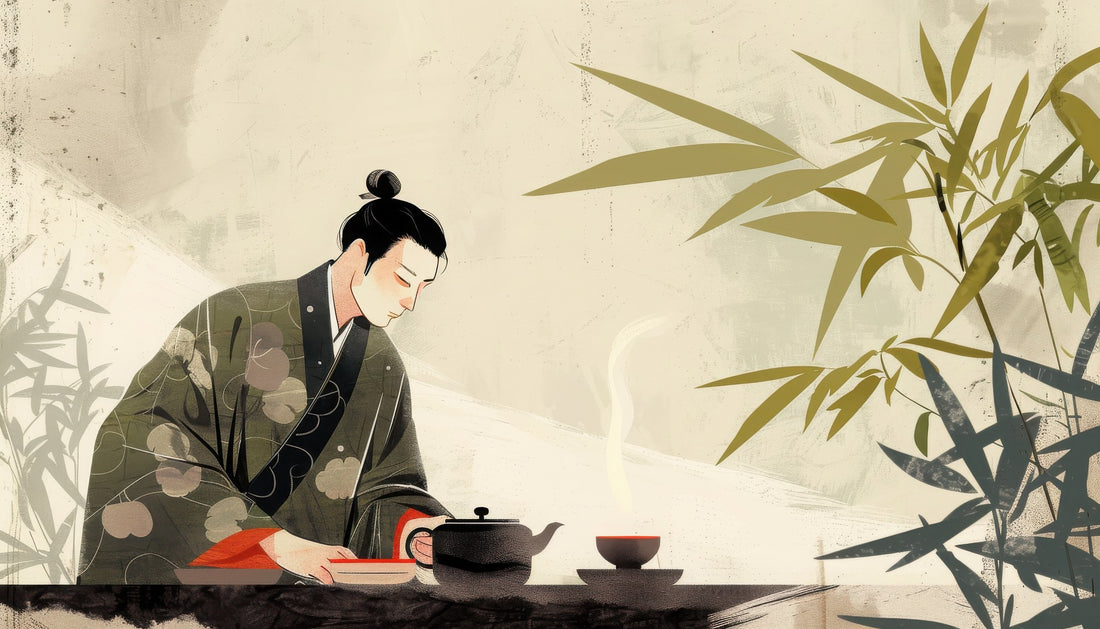Matcha, the vibrant green powdered tea, has become a symbol of Japanese culture and is well known for its rich flavor, health benefits, and traditional significance. However, matcha's journey from ancient China to the global stage is a tale filled with fascinating developments, cultural shifts, and enduring traditions. In this post, we’ll explore the history of matcha, from its origins to its modern-day popularity.

The Origins of Matcha: From China to Japan
Beginnings in China
Though most famous in Japan, matcha's story begins in China during the Tang Dynasty (618–907 AD). During this period, tea leaves were steamed and formed into bricks for easy transport and trade. The tea bricks were ground into powder, mixed with water, and consumed as a beverage. This method of tea preparation was an early precursor to the matcha we know today.
The practice of powdered tea consumption spread throughout China and reached its peak during the Song Dynasty (960–1279 AD). The Chinese Zen Buddhists, who valued tea for its calming effects during meditation, played a significant role in the development of powdered tea. However, as the Mongol invasion led to the decline of the Song Dynasty, the tradition of powdered tea began to fade in China.
Introduction to Japan
Matcha's journey to Japan is credited to the Buddhist monk Eisai, who traveled to China in the late 12th century. Upon returning to Japan, Eisai brought with him tea seeds and the knowledge of tea cultivation and preparation. He introduced matcha to Japan, not just as a beverage but as a spiritual practice.
In his book, Kissa Yojoki ("Drinking Tea for Health"), Eisai extolled the health benefits of tea and its positive effects on both the mind and body. Matcha became an integral part of Zen Buddhism in Japan, where it was used in meditation practices to help monks maintain focus and clarity.
The Development of the Japanese Tea Ceremony
The Rise of the Tea Ceremony

As matcha gained popularity in Japan, it evolved beyond a simple beverage and became a symbol of Japanese culture. The Japanese tea ceremony, or sado/chanoyu, developed during the 15th and 16th centuries, thanks to tea masters such as Murata Juko and Sen no Rikyu. These masters transformed the preparation and consumption of matcha into a meditative ritual that emphasized simplicity, mindfulness, and the appreciation of beauty in everyday moments.
Sen no Rikyu, in particular, is credited with refining the tea ceremony into the art form it is today. His principles of wabi-sabi (finding beauty in imperfection and transience) and ichigo ichie (translated to "one time, one meeting," or living in the now) are central to the tea ceremony. The ceremony itself became a way to cultivate inner peace, social harmony, and a deeper connection with nature.
Matcha in the Edo Period

During the Edo period (1603–1868), matcha continued to be associated with the elite classes, including samurai, nobility, and wealthy merchants. The tea ceremony became a way to demonstrate one's social status, refinement, and adherence to cultural traditions. However, it also began to spread to a wider audience, as matcha became more accessible and tea culture flourished throughout Japan.
Modernization and Globalization of Matcha
Matcha in the Meiji Era and Beyond
The Meiji Restoration (1868–1912) marked a period of rapid modernization in Japan, and with it came changes in tea production and consumption. The introduction of Western influences and new technologies led to the development of sencha (steamed green tea) as the most popular tea in Japan. However, matcha remained an important part of Japanese culture, particularly in the context of traditional ceremonies and rituals.
In the 20th century, matcha began to experience a revival, both in Japan and abroad. The growing interest in health and wellness, as well as the global appreciation for Japanese culture, contributed to the resurgence of matcha. Today, matcha is enjoyed not only in traditional tea ceremonies but also as a versatile ingredient in a wide range of culinary creations, from lattes and desserts to smoothies and skincare products.
Matcha’s Global Popularity

In recent decades, matcha has become a global phenomenon, celebrated for its unique flavor, vibrant color, and numerous health benefits. As awareness of matcha's antioxidant properties, ability to boost metabolism, and calming effects has spread, so too has its popularity. We see matcha used as ingredients in many products and its usage has expanded far beyond just that of a traditional beverage. Matcha cafés, specialty shops, and online retailers now offer a variety of matcha products to consumers around the world.
Conclusion: The Timeless Appeal of Matcha
Matcha's journey from ancient China to modern-day global popularity is a testament to its enduring appeal. Rooted in tradition yet continually evolving, matcha has transcended cultural and geographical boundaries to become a beloved beverage and ingredient worldwide. Whether enjoyed in a traditional tea ceremony or as part of a contemporary culinary creation, matcha remains a symbol of mindfulness, wellness, and the timeless art of tea.
Yedoensis offers our own authentic matcha straight from Japan! Sign up now and receive 20% off your first order and experience the deep traditions in matcha flavor for yourself! Visit our shop here! To learn more about matcha and all its uses, health benefits, please view our guide covering everything matcha.

